|
Newsletter
Seminar Material
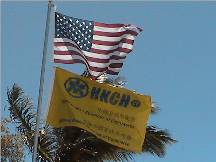



Biz:
China
Hong
Kong Hawaii
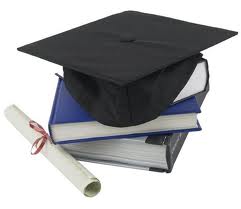

What people
said about us

China
Earthquake Relief
Tax &
Government
Hawaii Voter Registration
 Biz-Video
Biz-Video
 Hawaii's
China Connection Hawaii's
China Connection

 CDP#1780962
CDP#1780962

 Doing Business in
Hong Kong & China
Doing Business in
Hong Kong & China
| |
Chinese Medicine
Do you know our dues
paying members attend events sponsored by our collaboration partners worldwide
at their membership rates - go to our event page to find out more!
China
Projects Bidding Information - update daily
December 22 2010
Tradition Chinese Medicine (TCM) cosmetics that pass test of time By Cheng Anqi
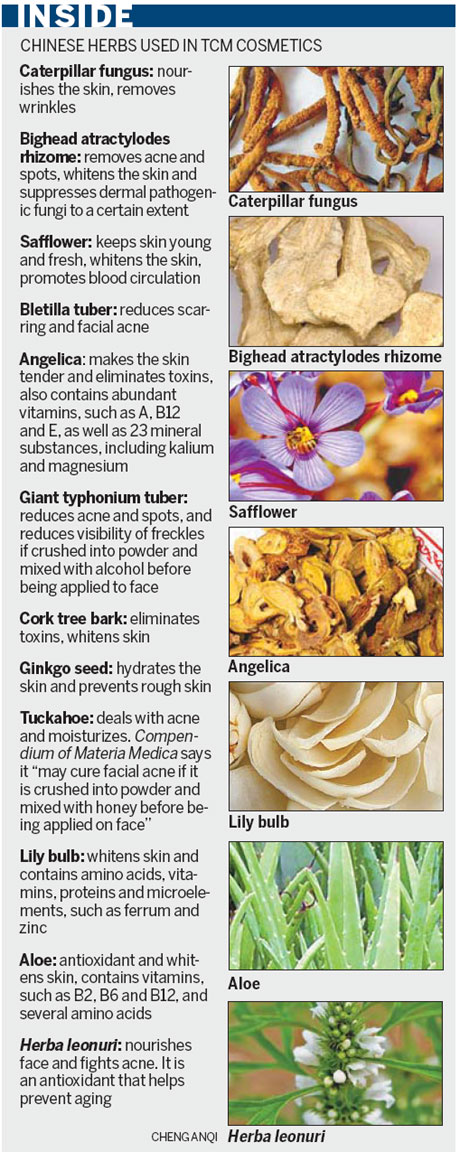 Traditional Chinese medicine cosmetics have a history of 1,600 years but have only recently started to compete with modern international brands. Traditional Chinese medicine cosmetics have a history of 1,600 years but have only recently started to compete with modern international brands.
University student Lu Jing has been battling acne for the past three years, using dozens of products to get rid of the disfiguring scars on her face - all without success. Three months ago, however, a doctor prescribed her traditional Chinese and Tibetan medicine in her hometown in the Innner Mongolia autonomous region. He told her to mix a mystery powder with egg white every night and apply it to the face. Now, the 25-year-old has a clear complexion free of comedones (blackheads and whiteheads) and with just a few fading scars.
According to the Chamber of Beauty Culture and Cosmetics of All-China Federation of Industry and Commerce, foreign companies have more than half the domestic cosmetics market and rake in 80 percent of the profits.
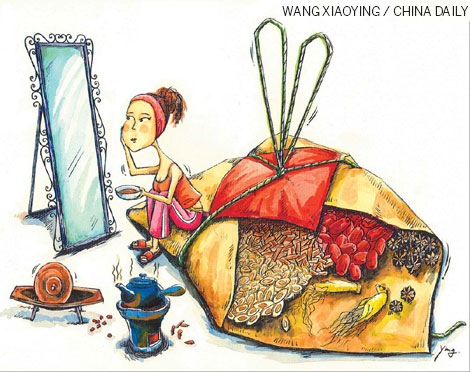 But people like Lu are increasingly turning to traditional Chinese medicine (TCM) cosmetics to sort out their skincare problems, moving away from Western beauty products. But people like Lu are increasingly turning to traditional Chinese medicine (TCM) cosmetics to sort out their skincare problems, moving away from Western beauty products.
So, when Lu returned to Beijing, she stopped using imported skincare products and instead went to reputable domestic pharmacies to buy suitable TCM cleansing milk, creams and facial masks, such as products from the 140-year-old pharmacy, Beijing Tongrentang Group Co Ltd.
"Tongrentang promotes TCM cosmetics products and has become the market leader," says Huang Xing, the general manager of Guangzhou Yanzhuang Cosmetics Ltd.
Meanwhile, Jiang Xiaojun, director of the Tongrentang publicity department, says the company's skincare products have passed the test of time.
The company's products include medicine originally prescribed by Wang Tao, a Tang Dynasty (AD 618-907) doctor that uses tuckahoe, the root of red-rooted salvia, ginseng and herba leonuri to improve sallow skin and moisturize.
Many young customers come to buy the whitening-and-moisturizing facial masks, says Zhang Can, a shop assistant at Tongrentang.
"Nearly 100 boxes are sold every day," she adds.
The move away from foreign cosmetics brands to domestic versions is a slow one, as domestic consumers have grown to trust and admire foreign brands.
Huang, of Guangzhou Yanzhuang Cosmetics Ltd, recalls that in the 1990s the senior manager of an international cosmetics company said Chinese companies could not build a global brand because they were just making copycat products.
"His words were unpleasant because they labeled Chinese goods as imitations, but it was true and to the point," says Huang, who has been involved in TCM cosmetics for 17 years.
"My friends always ask me to take a large empty case every time I go abroad and bring back luxury cosmetics, because they are cheaper abroad. It upsets me a bit," Huang says.
He believes TCM cosmetics have three directions in which to develop.
One is developing traditional eco-cosmetics, such as curing chloasma with honey and tuckahoe powder, a long-standing folk remedy.
Second is developing TCM cosmetics that meet modern cosmetic and marketing requirements, such as Tongrentang's whitening-and-moisturizing facial masks.
Third, extract chemicals from traditional Chinese medicines, such as amylase, polypeptides and alkaloids, and do research on their safety and beauty treatment values.
With a history of 1,600 years, TCM cosmetics will not fade away as trends change, Huang says.
He refers to beauty products from the Sui Dynasty (AD 581-618); the 81 products for facial care written by Sun Simiao, China's King of Medicine in the Tang Dynasty; and the 168 facial care products recommended in Compendium of Materia Medica by Li Shizhen in the Ming Dynasty (1368-1644).
"These facts cannot be changed by multinational companies, and it surely creates an opportunity for domestic cosmetics companies to compete with foreign brands."
World-class brands have a genetic blueprint, Huang says. If Chinese elements are built into the foundation of cosmetics, then strong brands like Tongrentang will find their place in the international market.
January 23 2009
China's 3.5 Billion Investment in CM –
Highest ever in History
To step up the support for the development of Chinese medicine (CM), the
central Chinese government had appropriated in 2008 a total of RMB3.5 billion
through various funding programmes initiated by National Development and Reform
Commission (NDRC), Ministry of Finance (MOF), Ministry of Science and Technology
(MOST) and other relevant government agencies. The funds will be used in medical
services, education and culture, research and development, and essential
facilities of CM hospitals. The funding scheme was unprecedented both in terms
of scope and scale.
Coordinated by the State Administration of Traditional Chinese Medicine (SATCM),
and with the support of local CM authorities, NDRC had allocated a total of
RMB2.2 billion for upgrading premises and facilities in 159 municipal CM
hospitals and 208 county CM hospitals, and procurement of medical devices for
276 county CM hospitals. MOF, working with SATCM, made an appropriation of
RMB1.1 billion which will be used in developing drug production capability in CM
hospitals, improving CM pharmacy facilities in county CM hospitals, training of
CM doctors, promotion of general techniques for the treatment of common
diseases, as well as setting-up and upgrading Specialist Wards/Clinics and
Emergency Service in CM hospitals. The 2008 funding also saw an unprecedented
appropriation of RMB31 million for the promotion of CM and its application to
the public. Through various activities and programmes, it was hoped that people
would be more familiar with CM and appreciate its unique edge.
MOST had also included CM innovation and research as the top-list items in its
agenda, with a total commitment of RMB150 million. The funding was distributed
through the “973 Programme”, the “11-5 Science & Technology Support Scheme” and
“CM Industry Research Endowment Fund”. The scope of support covered basic
research, acupuncture, pharmacology etc. In addition, NDRC and SATCM had
assigned 16 establishments as the State CM Clinical Research Base, investing
more than RMB4 billion (RMB1 billion from central budget) in total. All the
Bases would operate in full gear in 2009.
Since 1986, the central government had allocated about 10million as CM endowment
fund each year. Recently, the allocation had continued to increase and provided
a strong support to the development of CM, laying a solid foundation for the
advancement and modernization of CM.
December 1 2008
Mechanistic elucidation of Chinese
medicinal formula - Realgar-Indigo naturalis as an effective treatment for
promyelocytic leukemia
In March 2008, Prof. Chen Zhu (Minister of Health) and his research group
published an article entitled “Dissection of mechanisms of Chinese medicinal
formula Realgar-Indigo naturalis as an effective treatment for promyelocytic
leukemia” on the Proceedings of the National Academy of Sciences (PNAS). It was
probably the first systematic analysis conducted to unravel the efficacy and
underlying working mechanisms of Chinese medicinal formula-Realgar Indigo
naturalis (RIF) for treatment of acute promyelocytic leukemia (APL). Through
current biochemical approaches, the modes of actions of clinically effective
Realgar-Indigo naturalis formula: “multiple components could hit multiple
targets and exert effects of mutual reinforcement” have been demonstrated at
molecular, cellular and organism levels. The rationale of TCM design:
“Principal”, “Minister”, “Assistant” and “Servant” have also been illustrated
using modern biomedical approaches.
Rationale of combination therapy and formula design - Prof. Chen has pioneered
extensive research in combining all-trans retinoic acid (ATRA) and arsenic
trioxide (ATO) as a synergistic chemotherapy for APL. ATRA and ATO have been
reported to induce degradation of promyelocytic leukemia (PML)-retinoic acid
receptor alpha (RARα) that finally facilitated APL cell differentiation and
apoptosis. The clinical efficacy of ATRA/ATO combined therapy has been reported
with 4-year disease-free survival of more than 90% in APL patients.
As early as 1980s, the pathogenesis of APL still remained unclear, Prof. Huang
Shi Lin and a group of experts at TCM Hematology Institute of People's
Liberation Army designed a TCM-theory guided Realgar Indigo naturalis formula
comprising of Realgar, Indigo naturalis, Salvia miltiorrhiza and Radix
psudostellariae in accordance to symptoms and characteristics of APL patients.
With collective efforts on combination therapy, APL will hopefully be the first
curable acute myeloid leukemia. It has been documented that APL patients with
RIF prescription achieved a 5-year overall survival rate of 87% in multicenter
clinical trials. Despite its clinical efficacy, the molecular basis of RIF for
APL treatment remained unresolved.
Mechanistic elucidation of TCM formula - Prof. Chen and his research group are
the one who provide convincing explanation on the molecular mechanism of RIF at
biochemical level. Tetraarsenic tetrasulfate (A), indirubin (I) and tanshinone
IIA (T) are major active ingredients of Realgar, Indigo naturalis and Salvia
miltiorrhiza respectively. Tetraarsenic tetrasulfate is regarded as the
“Principal” element which induces ubiquitination and degradation of PML-RARα
oncoprotein and partly restore normal myeloid cell transcription leading to
terminal APL cell differentiation. Indirubin and tanshinone IIA serve as
adjuvant components to intensify tetraarsenic tetrasulfate-induced
ubiquitination and degradation of PML-RARα, strengthen reprogramming of myeloid
differentiation regulators and enhance G1/G0 arrest in APL cells. As
demonstrated in murine APL model, Indigo naturalis serves as “Assistant” to
alleviate toxic and adverse effect possessed by the Principal: Realgar. Both
indirubin and tanshinone IIA act as “Delivering servants” to facilitate delivery
of Principal element (Realgar) to the site of disease. Indirubin and tanshinone
IIA increase cellular uptake of arsenic by inducing up-regulation of
Aquaglyceroporin 9 (AQP9) which is a transmembrane protein governing arsenic
uptake and cellular sensitivity of arsenic. Collectively, the ATI components in
Realgar Indigo naturalis formula hit multiple targets and work together in a
synergistic mode.
Breakthrough of research methodology in multi-component CM formula design and
mechanistic study - Chen’s research group have successfully elucidated the
multiple components/multiple targets working mechanisms of RIF with current
biomedical approaches and illustrated the rationale of formula design. Most
researchers regard dissociation of TCM formula into smaller pieces for
downstream research as difficult tasks since the innate efficacy may be lost
once the formula was broken into discrete pieces. Given the complexity for
dissecting mode of action of numerous clinically proven formulae, it is
suggested to begin with those accompanied with precise efficacy as well as known
bioactive components and structures. Prof. Chen remarked that choosing to study
Realgar-Indigo naturalis formula is the first key step leading to fruitful
research findings since the three major components: tetraarsenic tetrasulfate,
indirubin and tanshinone IIA have already been well-studied. With modern
pharmaco-chemical methods, major bioactives in RIF have been dissociated,
combined and authenticated. As a result, the actual working mechanisms and sites
of action possessed by RIF can be fully dissected at molecular and cellular
levels.
Consistency in functional and mechanistic recognition of each bioactive
component has been derived from either molecular research findings or
perceptions of TCM practitioners. Prof. Chen’s research findings have attracted
extensive positive comments from scientific academia worldwide. A comment
entitled “Traditional Chinese medicine: Ancient formula in modern times” has
been published in Nature China, with special emphasis on how major components of
an ancient Chinese medicinal formula act in a harmony to cure disease and its
significance for bridging the gap between Traditional Chinese medicine and
Modern Western medicine. Besides, “SciBX: Science-Business eXchange”, a joint
publication platform organized by Nature Publishing Group and BioCentury
Publications Inc., has also reported these research findings.
Embracing tradition and innovation - Prof. Chen attributes his success primarily
to the choice of TCM formula. The clinical efficacy of RIF in treating
promyelocytic leukemia has been proven in multiple clinical centers which
provided solid foundation for further downstream studies. His prominent research
findings can also be attributed to the availability of highly purified bioactive
compounds as well as well-established cell culture and animal APL models.
Enrichment of TCM theoretical system and applicability are the blueprints for
TCM development. All in all, embracing tradition and innovation is advocated.
Prof. Chen is in favor of an open mind for TCM modernization. He also
recommended that research should embrace modern technology and
multi-disciplinary approach. TCM combination therapy, based on nearly 100,000
formulae, has been advocated for more than 2500 years. Western medicine
practitioners have gradually recognized the advantages of combination therapy in
recent years. Although TCM formulae have achieved clinical efficacies, not all
essential components have been identified and their underlying working
mechanisms have not yet been explained convincingly at biochemical level. These
collectively hinder the modernization of TCM and their application. Current
advances in system biology and biomedical sciences will offer opportunities and
platforms to bridge and integrate Western and Eastern medicines, and pave the
way towards modernization of TCM. Through tradition and innovation, novel or
modern medicine will emerge in a better form from Chinese and Western medicine.
November 25 2007
Chinese medicine publicity campaign
launches
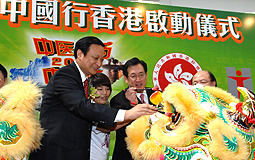 Publicity drive: Vice-Minister of
Health and Director-General of the State Administration of Traditional Chinese
Medicine Dr Wang Guoqiang and Secretary for Food & Health Dr York Chow launch
the "Promotion of Traditional Chinese Medicine in China - Hong Kong Program". Publicity drive: Vice-Minister of
Health and Director-General of the State Administration of Traditional Chinese
Medicine Dr Wang Guoqiang and Secretary for Food & Health Dr York Chow launch
the "Promotion of Traditional Chinese Medicine in China - Hong Kong Program".
Educational and publicity programs will be launched from November 24 to December
31 to enhance public understanding of Chinese medicine.
Officiating at the launch of the "Promotion of Traditional Chinese Medicine in
China - Hong Kong Program" today, Secretary for Food & Health Dr York Chow said
the Government is committed to the development of Chinese medicine in Hong Kong.
More than 50 activities will be held in the coming five weeks. Highlights
include a symposium on global development in Chinese medicine, China-Hong Kong
heart-to-heart carnival on Chinese medicines, visits to elderly homes, free
consultations by Chinese medicine practitioners as well as seminars.
All the activities are non-profit-making and will be provided free to the public
or the Chinese medicine sector.
Vice-Minister of Health and Director-General of the State Administration of
Traditional Chinese Medicine Dr Wang Guoqiang said the "Promotion of Traditional
Chinese Medicine in China" is a nation-wide campaign that will last for three
years.
The Hong Kong program will enable the local community to gain a better
understanding of Chinese medicine and will be beneficial to its development, he
added.
Speaking to reporters after the launch, Dr Chow said the Government will study
the possibility of developing a community hospital in Tin Shui Wai.
"In the longer run, we feel that we have about 280,000 people within Tin Shui
Wai, we will seriously consider whether there is a need for a community hospital
to be developed perhaps within the next 10 years or so," he added.
November 24 2007
Hong Kong and China sign Chinese
medicine pact
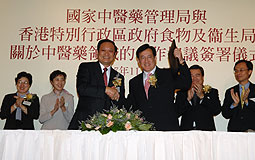 Healthy pact: Vice-Minister of Health
and Director-General of the State Administration of Traditional Chinese Medicine
Dr Wang Guoqiang (left) and Secretary for Food & Health Dr York Chow sign an
agreement fostering cooperation in the development of Chinese medicine. Healthy pact: Vice-Minister of Health
and Director-General of the State Administration of Traditional Chinese Medicine
Dr Wang Guoqiang (left) and Secretary for Food & Health Dr York Chow sign an
agreement fostering cooperation in the development of Chinese medicine.
Hong Kong and the Mainland have signed an agreement fostering co-operation and
exchange between the two jurisdictions in the development of Chinese medicine.
Secretary for Food & Health Dr York Chow and Vice-Minister of Health and
Director-General of the State Administration of Traditional Chinese Medicine Dr
Wang Guoqiang today signed the document in Hong Kong.
Under the agreement, the two parties will enhance co-operation in several areas,
including:
* strategies for the development of Chinese medicine;
* Chinese medicine policies and regulation;
* development of service interface between Chinese and Western medicine;
* standards for Chinese medicine;
* training for Chinese medicine practitioners; and
* hospital management and organisation of promotional activities for Chinese
medicine.
Co-operation mechanism
To put into effect the co-operation agreement, the two parties agreed to
establish a co-operation mechanism among relevant departments, and to hold
working meetings when necessary.
Hong Kong will launch a series of programmes under the auspices of a nation-wide
campaign to boost the promotion of traditional Chinese medicine in China.
To be held between November 24 and December 31, the Hong Kong programme will
showcase Hong Kong's progress in the development of Chinese medicine. The
campaign also aims to enhance the public's understanding of the history and
curative effect of Chinese medicine.
August 18 2007
Canada, Hong Kong
Collaborate in Chinese Medicine Signing of Four MOUs a Major Step Forward in
Cooperation
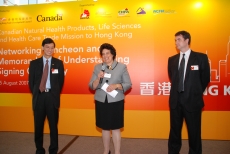 The Canadian
Life Sciences Trade Mission has been visiting the annual ICMCM for the past four
years. Photo shows (left to right) Ralph Chow, Director of the TDC, Penelope
Marrett, mission leader, and James Gilmour, Vice Consul and Trade Commissioner
of the Canadian Consulate, at the networking luncheon, organised by the TDC and
the Canadian Consulate today in Hong Kong.
The Canadian
Life Sciences Trade Mission has been visiting the annual ICMCM for the past four
years. Photo shows (left to right) Ralph Chow, Director of the TDC, Penelope
Marrett, mission leader, and James Gilmour, Vice Consul and Trade Commissioner
of the Canadian Consulate, at the networking luncheon, organised by the TDC and
the Canadian Consulate today in Hong Kong.
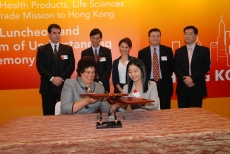 Penelope
Marrett (front, left), President and CEO of the CHFA, and Angela Lau, President
of the HKHFA, sign an MOU promoting information exchange between the two
organisations.
Penelope
Marrett (front, left), President and CEO of the CHFA, and Angela Lau, President
of the HKHFA, sign an MOU promoting information exchange between the two
organisations.
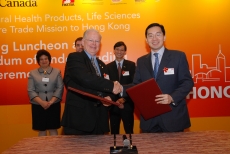 Dr
Murray McLaughlin (left), Chairman of AFMnet (left) and Dr Edmund Lee, Executive
Director of the HKJCICM, sign an MOU encouraging R&D development.
Dr
Murray McLaughlin (left), Chairman of AFMnet (left) and Dr Edmund Lee, Executive
Director of the HKJCICM, sign an MOU encouraging R&D development.
The Canadian Life Sciences Trade Mission has been visiting the annual ICMCM for
the past four years. Photo shows (left to right) Ralph Chow, Director of the TDC,
Penelope Marrett, mission leader, and James Gilmour, Vice Consul and Trade
Commissioner of the Canadian Consulate, at the networking luncheon, organized by
the TDC and the Canadian Consulate today in Hong Kong.
Chinese medicine received a significant shot in the arm today with the signing
of four memorandums of understanding between Canadian and Hong Kong institutes.
The four MOUs cover collaboration in the research, technology transfer,
commercialization and promotion of Traditional Chinese Medicine (TCM) and health
products in the two markets. Signed during a luncheon hosted by the Canadian
Consulate in Hong Kong and the Hong Kong Trade Development Council (TDC), the
agreements bring together The Canadian Health Food Association (CHFA) and the
Modernized Chinese Medicine International Association (MCMIA), The CHFA and the
Hong Kong Health Food Association (HKHFA), Canada's Advanced Foods and Materials
Network (AFMNet) and the Hong Kong Jockey Club Institute of Chinese Medicine (HKJCICM)
and Bell Alliance International Inc and Zigen Pharmaceutical Ltd.
The MOUs are the result of a Canadian Life Sciences Trade Mission, which has
been visiting Hong Kong's annual International Conference and Exhibition of the
Modernization of Chinese Medicine and Health Products (ICMCM) since 2004.
"The trade mission's objective is to encourage Canadian and Hong Kong
partnerships in the life science sectors, including buying and selling, joint
ventures and research cooperation," said Andrew Yui, Director of the TDC's
Toronto office, which has played a key role in organising the missions to Hong
Kong.
The MOU between the CHFA and MCMIA supports mutually beneficial developments,
particularly in exchanging knowledge and market information and sharing updates
on regulatory requirements.
"The new Natural Health Product Regulation opens a clear path for high quality
TCM to be introduced to Canada as natural medicine. Similarly, Canadian natural
health products can also be introduced to the Greater China region. CHFA and
MCMIA members should find plenty of opportunities to do business between Canada
and China using Hong Kong as an efficient portal," said Abraham Chan, President
of MCMIA.
The agreement between the CHFA and the HKHFA establishes similar cooperative
links, with an emphasis on optimising the resources of both organizations to
support mutually beneficial developments and activities.
"The MOU between AFMNet and HKJCICM strengthens scientific and resource planning
and technology transfer of R&D deliverables, raising the return on investment
from research to applications," said Dr Rickey Yada, Scientific Director of
AFMNet, and Dr Edmund Lee, Executive Director of HKJCICM.
The commercial MOU between Bell Alliance and Zigen creates a long-term
partnership between the two parties, particularly in the development of
international markets for health products. "Our companies are working closely
together to introduce Chinese medicine formulations and active ingredients to
Canada, positioning them as pharmaceuticals and natural health products, which
are legally recognised as drugs in Canada, rather than health foods or dietary
supplements. We hope to leverage on our success in Canada to introduce these
products to other countries around the world," said Albert Wong, Managing
Director of Zigen Pharmaceutical Ltd.
"The MOUs are a milestone in the ongoing efforts of the TDC and our consulate to
promote Chinese medicine and health foods. We are proud of this development and
will ensure that the collaboration continues to build," said Francois Rivest,
Consul and Senior Trade Commissioner of the Canadian Consulate in Hong Kong.
August 3 2007
Chinese Medicine Fair Attracts
International Interest - More than 180 Exhibitors to Attend this Month's
Exhibition
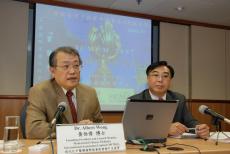 Albert Wong (left), founding president of the
Modernized Chinese Medicine International Association (MCMIA), and Sidney Ng, an
MCMIA executive, agree that Hong Kong has the potential to become the region's
trade and information hub for quality Chinese medicine. The two took part in the
press briefing today, for the 6th International Conference and Exhibition of the
Modernization of Chinese Medicine and Health Products. The exhibition will take
place August 16-20.
Albert Wong (left), founding president of the
Modernized Chinese Medicine International Association (MCMIA), and Sidney Ng, an
MCMIA executive, agree that Hong Kong has the potential to become the region's
trade and information hub for quality Chinese medicine. The two took part in the
press briefing today, for the 6th International Conference and Exhibition of the
Modernization of Chinese Medicine and Health Products. The exhibition will take
place August 16-20.
Chinese medicine, health supplements,
health care and therapy, equipment and much more will highlight the 6th
International Conference and Exhibition of the Modernization of Chinese Medicine
and Health Products (ICMCM), August 16-20, at the Hong Kong Convention and
Exhibition Centre. About 180 exhibitors from 12 countries and regions will make
this year's fair more international than ever. Along with Hong Kong, the Chinese
mainland, Macau and Taiwan, companies from Canada, Japan, Korea, New Zealand,
Malaysia, Singapore, Poland and Switzerland will take part. The Canadian,
Malaysian and Swiss exhibitors will be participating for the first time at the
fair, which is jointly organised by the Hong Kong Trade Development Council (TDC)
and the Modernized Chinese Medicine International Association Ltd (MCMIA).
The fair will feature eight pavilions, spotlighting the offerings of Korea and
Japan, as well as those from Jilin, Guangzhou, Shanghai, Hangzhou, Qinghai and
Ningxia in the Chinese mainland.
"About 30 buying missions, with representatives from more than 300 companies,
will visit the fair," said Sidney Ng, an MCMIA executive. "Both the TDC and
MCMIA are doubling their efforts to boost business matching between buyers,
exhibitors and local companies," said Dr Ng.
In this regard, a life sciences mission from Canada has reached three
cooperation agreements with Hong Kong research institutes and enterprises. They
will sign memorandums of understanding (MOUs) during a networking lunch, hosted
by the Canadian Consulate in Hong Kong and the TDC, on August 15. The MOUs
include: Canada's AFMnet and the Hong Kong Jockey Club Institute of Chinese
Medicine; the Canadian Health Food Association and MCMIA; and Bell Alliance and
Zigen Pharmaceutical.
"Chinese medicine is becoming more and more popular around the world," said
Albert Wong, founding president and council member of MCMIA. "More and more
western countries are realising the value of Chinese medicine in treating
chronic diseases and improving quality of life," Dr Wong added.
Last year, more than 9,100 buyers from 60 countries and regions visited the
fair, a 66 per cent increase over 2005. Public visitors exceeded 231,000. A
high-level conference will take place during the first two days of the ICMCM.
Under the theme of "the Integration of Science Research and Development in Novel
Chinese Medicine," the conference will focus on pharmacological and clinical
studies and the latest developments in Chinese medicine, including branding.
With the support of the University of Hong Kong, an educational display will be
set up at the fair, offering healthcare tips to the public. A Chinese Medicine
Health Public Forum will also be held, providing information about Chinese
medicine and health products.
The ICMCM will be staged concurrently with the Hong Kong International Medical
and Health Care Fair, as well as Food Expo. The fair will be open exclusively to
trade visitors for the first two days, with the public able to attend the ICMCM
from August 18 to 20.
Hong Kong has long been a trading centre for Chinese medicine. Exports of
Chinese medicine in 2006 amounted to US$254 million. Exports for the first five
months of this year totaled US$108 million, a 3.4 per cent increase compared to
the same period last year.
June 15, 2006
Hong Kong Jockey Club Institute of Chinese
Medicine Limited (HKJCICM) announced today that it had signed a collaboration
and services agreement with Phynova Group PLC in the United Kingdom ("Phynova")
(AIM: PYN), a developer of pharmaceuticals derived from Chinese botanical drugs
targeting viral and metabolic diseases and cancer, on 5 February 2007 to develop
novel anti-cancer drugs based on Chinese medicines.
January 5, 2006
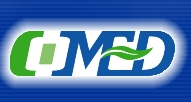 Hong Kong Jockey Club - Institute of Chinese Medicine Limited
Hong Kong Jockey Club - Institute of Chinese Medicine Limited
Turn science into
intellectual property rights for technology transfer and would like potential
business/R&D partners to express their interests on the following R&D
projects/results:
February 26, 2005
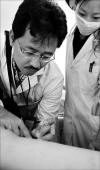 Traditional Chinese
Medicine (TCM) -
Age-old craft needs IPR know-how - By
Qin Chuan
Traditional Chinese
Medicine (TCM) -
Age-old craft needs IPR know-how - By
Qin Chuan
Syafruddin Gaus from
Indonesia treats a patient with acupuncture at the Shanxi Traditional Chinese
Medicine Research Institute in Taiyuan. TCM is gaining increasing recognition
around the world.
How to best protect the
intellectual property rights (IPR) of Traditional Chinese Medicine (TCM) has
long been a challenge for its practitioners in China.
For Dong Zhenhua, applying for patents is definitely not the answer.
A TCM practitioner, Dong owns an ancient prescription for the treatment of
rheumatoid arthritis, which is reportedly very effective. But she is not willing
to apply for a patent for her prescription. "If the prescription gets out,
everything is gone," she argues, referring to the fact that the prescription
will be publicized once the application is filed.
Details of a prescription, including specifics of herbs and how to use them,
have to be made public in the course of a patent application, explains Gu Xiaoli,
deputy director of the co-ordination and administration department under the
State Intellectual Property Office.
But this runs contrary to the traditions and practice of most TCM practitioners
who are accustomed to jealously guarding remedies very often passed down by
family members or apprentices, generation after generation. Consequently, there
is a conflict between the modern idea of patent protection and age-old
practices. The rationale behind patenting is to ultimately allow greater, and
ultimately free accessibility to the product concerned. In China, the lifespan
of a patent is 20 years.
But TCM doctors regard their remedies as personal belongings and something upon
which they depend for a living.
But, Liu Tonghua, a professor with the Beijing University of Chinese Medicine,
who has been studying TCM intellectual property rights for years, suggests TCM
practitioners should apply for patents if they want to protect their
prescriptions. If the patents are applied for and granted, they will have access
to protection in the event of their concoction being infringed upon. But if they
do not apply, it will be impossible for them to do anything once a prescription
is taken up by others, said Liu.
He recommends practitioners conduct a thorough and in-depth study of all the
prescriptions they own. Many, however, depend on years of experience when it
comes to treating patients and do not really know which kinds of herbs are
indispensable to their prescriptions, said Liu.
This is the biggest problem for TCM patent application in China, he added.
"Patent requires scientific research, not just experience."
In addition, the Chinese have much to learn about patent application.
For example, when applying for a patent for a set of forceps, overseas
applicants are likely to submit more than 20 drawings, demonstrating detailed
aspects of the product. But, said Liu, Chinese applicants would tend to hand in
a few. "Just as China is in the process of industrialization, people are still
learning how to apply for patents appropriately," he added.
A guide on how to apply for a TCM patent is soon to be published and will help
people understand the application process, said Liu, one of its authors.
To gain more experience of TCM intellectual property protection, last October
Gu's office designated Ankang in Shaanxi Province as a national pilot base for
the industrialization of patented TCM techniques. It is anticipated experience
gained there could be promoted across the country.
Ankang was chosen because of the local TCM industry's existing network, ranging
from herb growing, research and medicine production. The base is the only one of
its kind in the country, she said. Herbs in Ankang, which lies in mountainous
southern Shaanxi, are considered good in quality and rich in variety.
The State Administration of Traditional Chinese Medicine has also launched a
research programme to better protect TCM knowledge, the China News Service
reported. Liu Changhua with the Chinese Academy of Traditional Chinese Medicine,
told the agency the existing system affords insufficient protection. It is
pressing that a new and practical one be developed, he was quoted as saying.
The program will conduct research on the classification of TCM resources, who
should own and benefit from TCM knowledge and how to share the benefits once
intellectual property rights are granted, said Liu. A database for TCM patents
is also to be set up, the report quoted him as saying.
Modernization guidelines - In addition, the protection of TCM resources and
their intellectual property rights is included in a national guideline for the
modernization of the TCM industry between 2002 and 2010. This was compiled in
2002 by seven government bodies working in conjunction with the Chinese Academy
of Sciences.
According to the guideline, regulations on the protection and management of TCM
resources will be drafted. A strategy on the protection of TCM intellectual
property rights will be designed, in response to fierce international
competition for patents, the guideline states. But whether or not genetic
resources, traditional knowledge and folk arts should fall under the remit of
IPR protection remains a disputed topic worldwide. The conflict lies mainly
between developing countries and developed ones, with the former accusing the
latter of exploiting their traditional resources without making adequate
compensation, said Gu.
"The concept of intellectual property rights in themselves has been developing,"
she adds.
The World Intellectual Property Organization (WIPO) has already focused on the
need for protection of traditional knowledge. Last March, the WIPO
Intergovernmental Committee on Intellectual Property and Genetic Resources,
Traditional Knowledge and Folklore (IGC) decided on concrete steps to accelerate
international work on protecting traditional knowledge and folklore.
Its discussions resulted in an agreement on the development of the necessary
building blocks for their protection. This was the first meeting of the IGC
since its mandate was renewed by the WIPO General Assembly in October 2003, with
instructions speeding up its work and focusing on the international dimension of
the subject area. One of the major issues the committee will address is
strengthening the defensive protection of traditional knowledge and genetic
resources against illegitimate patenting. Traditional knowledge should include
traditional medicine, said Shen Zhixiang, director of the Department of
International Co-operation under the State Administration of Traditional Chinese
Medicine.
Greater protection - China can learn much from the experience of other countries
to protect traditional medicine. Thailand protects its traditional medicine
through an effective legal framework, which classifies prescriptions into three
categories, said Shen. Those included at national level are strictly protected
and anyone wanting to make use of them needs to get approval. The second level
refers to those owned by individuals, who register prescriptions at the
department for protection, and the third refers to those made public and freely
available.
Other means of protection are continually being explored.
Shen said his administration and the State Council's Legislative Affairs Office
are working together on drafting regulations to protect the intellectual
property rights of TCM. He said it is highly likely a number of TCM
prescriptions will be listed under State-level IPR protection.
It is like the use of a natural resource, he said. "If you want to use it, you
pay for it."
Other experts have called for the protection of the original habitat of herbs.
Xu Jintang, a professor with the Institute of Medicinal Plants under the Chinese
Academy of Medical Sciences, says such protection should be a priority. "We
should promote the idea that herbs should be planted at suitable places. Herbs
just cannot be planted everywhere," a reference to the fact that herb growing is
becoming popular across the country as a more profitable alternative to normal
crops.
The planting of different herbs requires different natural conditions, including
local climate and altitude, said Xu. But only suitable places can produce
good-quality herbs, he added. Specific standards need also to be set for herb
growing to preserve the original habitat of various types.
Training of qualified professionals, such as herb gatherers, should also
strengthened, said Xu. In the past, experienced gatherers could tell the good
from the bad at a glance, but now such levels of skill are diminishing.
"Medicines are different from other produce. They are meant to save lives,"
added Xu.
Wider recognition - In recent years interest and recognition of TCM has
flourished all over the world. Shen's administration and the Ministry of Health
have, to date, signed co-operative agreements on TCM with counterpart
departments of 67 countries.
These agreements make it possible for TCM to become legally accepted, in the
countries concerned, in the future. For example, under an agreement with Italy
signed last November, TCM experts will go there to teach and clinics will be set
up, said Shen.
"But it will take time for foreign countries, especially those outside Asia, to
understand TCM fully and accept it," he said.
The natural herbs industry, already a multi-billion one, is forecast to grow
enormously in the next few years. The World Bank estimates globally it will
generate a revenue of US$200 billion by 2008, from the US$80 billion of 2000,
the People's Daily recently reported. In the past five years, China's export of
TCM products has been on the rise. It reached US$720 million in 2003 and has
been experiencing an annual growth of 5.5 per cent, the report said. In
particular, the market in Europe has witnessed 26 per cent annual growth.
Currently there are more than 50,000 TCM institutions in more than 130
countries, according to the report.
Acupuncture, a notable part of TCM, is widely accepted in many countries and has
over 20,000 practitioners in Germany, France and the United Kingdom. And in the
United States alone the number is around 10,000. The number of overseas students
learning TCM in China comprises the largest group among those studying the
natural sciences.
But TCM still has a long way to go.
Currently the output value of the TCM industry in China is less than 100 billion
yuan (US$12 billion), says Shen. And TCM accounts for less than one-fifth of
China's pharmaceutical market.
Patent
application on the rise
The number of Traditional Chinese Medicine (TCM) patent applications in China
has been on the rise in recent years.
According to statistics from the State Intellectual Property Office, the office
received 3,247 applications in 2001. The number rose to 3,865 in 2002 and 4,030
in 2003.
Chinese companies are the majority of the applicants, while many foreign
applicants with more advanced techniques are also coming to inquire about
patents, according to Gu Xiaoli, an official with the office. Meanwhile, more
and more foreign companies are applying for TCM patents in China, especially
those from Japan and the Republic of Korea, she said. However, the number of
Chinese companies applying for TCM patents abroad is very limited. Gu describes
such applications as "rare."
That may have something to do with the strategy of Chinese companies expanding
into overseas markets has not yet been listed on their agenda, Gu said.
The State Administration of Traditional Chinese Medicine, together with the
ministries of education and culture, is making preparations for the recognition
of TCM as a world intangible heritage entity. "The move is for the better
protection and development of our traditional heritage," said Shen Zhixiang,
director of the Department of International Co-operation with the
administration.
The United Nations Educational, Scientific and Cultural Organization (UNESCO)
passed the Convention for the Safeguarding of the Intangible Cultural Heritage
in 2001.
The convention defines intangible cultural heritage as the practices,
representations, expressions, as well as the knowledge and skills, that
communities, groups and, in some cases, individuals recognize as part of their
cultural heritage.
The organization has so far put 47 entities on the list, including China's Kunqu
Opera in 2001.
Shen said the Chinese Commission for UNESCO, based at the Ministry of Education,
listed TCM in 2001 in its five-year application plan for intangible cultural
heritage status. World heritage listing will help to make TCM better understood
by the international community, Shen said.
"Our purpose is that we protect TCM not only for China itself, but also for all
human beings," he said. Shen also expects TCM will gain more attention from
local governments and the general public in China as well.
He added that medical practices used by ethnic groups, such as Tibetan medicine,
are included in TCM.
January 1, 2005
Hong Kong Jockey Club Institute of
Chinese Medicine (HKJCICM)
As a subsidiary of the Applied Science and Technology Research Institute (ASTRI),
the HKJCICM is set up by the Hong Kong SAR Government as the local focal point
of action and co-ordination to steer Chinese medicine (CM) development.
Since its start-up, HKJCICM has gained first-hand understanding of local
research capabilities. It has also acquired good understanding of the CM
development landscape, regulatory developments and issues related to
intellectual property protection through specific research projects and
extensive networking.
There are government initiatives to spearhead innovation and technology
development in Hong Kong and to foster Mainland-Hong Kong business and
technological collaborations. The HKJCICM will play a role to support CM
development under these initiatives. The Institute’s achievements to date and
its development plan for the future will be reported in later sections. As a
mission-orientated organization, the HKJCICM is committed to advance CM
development and enhance the competitiveness of related industries through
value-added R&D.
The HKJCICM has completed its start-up phase and established a broad network
with its stakeholders locally, in the Mainland and overseas. Through engagement
and continuous discussion with experts in the field, the HKJCICM has acquired
first-hand understanding of the CM R&D landscape and the markets.
Through its portfolio of R&D projects, the HKJCICM undertakes CM research
related to quality control, biology, pharmacology and processing. As a few
projects are oriented towards meeting technical requirements of Mainland
regulations on the development of medicines, the HKJCICM has learnt much about
market-specific regulations and intellectual property protection. So far, nine
patents are either filed or under drafting and a number of scientific
publications have been submitted for publication.
Noting the unique properties of CM in health maintenance and restoration of
disequilibrium of body states leading to treatment of diseases, the HKJCICM will
focus on using modern science and technologies to investigate the medicinal and
pharmacological properties of CM in future development. Please see the
“Developments” section.
Considering the strategic importance of QA and QC in promoting CM development ,
the HKJCICM has set up its Chinese Medicine Laboratory (CMED Lab) and associated
research network to support research and industrial development.
The CMED Lab will become a centre of excellence in the development of QA
schemes, standard-setting, provision of analytical methodologies and chemical
markers / standards for QC of CM. The HKJCICM will expand partnerships with its
key stakeholders to progress development. Please see the “Developments” section.
The HKJCICM has established its website for disseminating information in
relation to research, industry and regulatory development. It will feature news
and major events of Chinese medicine within and outside Hong Kong.
Government Initiatives
Readers are invited to note developments on a few government initiatives signed
between the Mainland Government and the Hong Kong SAR Government to foster
closer economic partnerships and technology collaborations. As CM is one of the
identified focus areas, the HKJCICM will play a role to support development.
Chinese medicine is also one of the five technology areas within the Development
Plan of ASTRI. As a subsidiary of ASTRI, the HKJCICM will be the centre for CM
development under the government’s new strategy of innovation and technology
development. It will plan, co-ordinate and fund projects to support the
advancement of Chinese medicine and industrial development through value-added
R&D.
The involvement of the HKJCICM in these government-driven initiatives will be
integrated into the Chinese Medicine Development Roadmap of the HKJCICM. We will
strengthen the existing management structures and systems for corporate and
project management, IP and information management and business development. We
will also establish and strengthen partnerships with research-based
organisations and companies, among other key stakeholders in governments, public
sectors, professional and industrial bodies.
Development Priorities
The HKJCICM aims to spearhead science and evidence-based development across CM,
pharmaceutical, botanical, nutriceutical, food and other application areas
through value-added R&D and partnerships with its stakeholders.
1. Chinese medicine R&D in ageing-related endocrinology and neuroscience, and
other worthy projects
Endocrinology and Neuroscience embrace a variety of diseases and body states
which are ageing-relevant. This research direction is selected to (1) create
‘natural’ interfaces between western medicine-trained clinicians and CM
practitioners, hence supporting the Government to integrate CM into the existing
medical system, (2) research and capture the essence of Chinese medicine for
prevention and delay onset of disease progression, (3) embrace the local
research stronghold in these areas, and (4) capture the business interests and
market needs in the face of the tremendous unmet medical needs. This research
direction also aligns well with the HKJC’s commitment to better elderly care and
addresses the global and local problems associated with ageing.
A professional team of scientists with knowledge in the CM field and extensive
industrial experience is being put together at the HKJCICM to strengthen R&D
planning, management and co-ordination of related activities. The HKJCICM will
select CM study entities with demonstrated scientific and clinical evidence in
related areas of applications for further research. The HKJCICM aims to
contribute towards strengthening the evidence base of CM in the long term. It is
anticipated that there will be both near to long-term deliverables to facilitate
the application of the research outputs. The HKJCICM will also fund other worthy
R&D projects to advance the development of CM.
2. Strengthening quality assurance and quality control of Chinese medicine
Given the value of the “Hong Kong” brand, the local research track record and
the credibility of local businesses in the provision of quality products and
services etc., the HKJCICM is committed to this line of development.
Through funding, the HKJCICM has established its Chinese Medicine Laboratory and
associated research network to strengthen pharmacognosy, phytochemistry research
and quality control in Chinese medicine and to support our funded projects. This
Laboratory will centralise planning and co-ordination for effective project
management, use of resources and sharing of related technical information.
This Laboratory undertakes or co-ordinates the collection and authentication of
Chinese medicine (CM) herbs for research into the quality of CM preparations and
the establishment of banks of analytical methodologies, quality extracts and
chemical markers supporting quality control of CM. This Laboratory, staffed by
experienced scientists, will help strengthen related CM research capabilities.
The adoption of quality assurance (QA) practices also helps to raise the quality
of its funded research.
This Laboratory aims to become the centre of excellence with international
recognition in the provision of authenticated raw materials, research
methodologies and chemical markers for better quality control of Chinese
medicine. As QA and QC of Chinese medicine are substantial activities of
strategic importance, the HKJCICM will establish collaborations with key
stakeholders within and outside Hong Kong.
With this foundation and in light of experience, we will progressively develop
quality assurance schemes on CM or specific product categories with public or
semi-public establishments in selected territories with significant trading
volumes of CM-based products. The HKJCICM will partner with industry players for
execution. Through this Laboratory and associated research network, the HKJCICM
also aims to provide QC-related services for the industry.
3. Science, Technology and Information (ST&I) platforms for research and
industrial development
The HKJCICM will establish a key ST&I platforms to support research and industry
development. Through central planning and co-ordination, the HKJCICM aims to
strengthen research in (i) safety appraisal of CM, including CM toxicity,
herb-drug interactions and adverse drug response; (ii) pharmacological
evaluation of CM preparations and (iii) development of CM research methodologies
for evidence base.
For efficiency and effectiveness, all activities at the HKJCICM will be
integrated into its CM Development Roadmap and centrally managed by the Team
HKJCICM.
September 2, 2004
Chinese Medicine Distributors Have New
Legal Status in EU
The European Directive on the Registration Procedures of Traditional Herbal
Medicines released by the EU formally entered into force on 30 April 2004, under
which various member states are to incorporate the EU's traditional medicine
laws into their national drug laws within 18 months after the latter takes
effect and implement them in accordance with their local conditions. May 2004 to
April 2011 is given as the transition period during which traditional medicines
already on the market can enter and be sold in EU countries. In the wake of this
directive, Guangdong-based Chinese medicine manufacturers are among the first to
make a foray into the EU market.
Albeit being national treasures, traditional Chinese medicine (TCM) including
medicinal herbs and patent Chinese drugs has yet to be legally recognized in
most countries with a western medical background due to the lack of theoretical
support and standardisation in the dosage, composition and efficacy of TCM. As a
result, China's TCM exports can only be marketed internationally as health
products, food or food supplements and are mainly sold to overseas Chinese.
Market expansion has long been an onerous task.
The new EU directive, however, represents a significant stride in recognising
the status of TCM. Marked impact is immediately seen in pertinent exports from
Guangdong to the 25 EU member states. Patent Chinese drug exports, for instance,
jumped 3.4 times in May 2004 just after the directive became effective. Although
exports to the EU only make up a fraction of the total exports, many
Guangdong-based TCM exporters are excited about such robust growth.
While the new directive has opened a door for the export of TCM to the EU, it
also means that a series of laws and regulations concerning drug administration
now apply to the production, import and wholesale of traditional medicines. The
impact on TCM entering the EU market is far-reaching, with TCM exports now
having to pass various certifications such as GMP and complying with quality
standards in the EU Pharmacopoeia. Fulfiling these two requirements alone is no
easy task for mainland TCM enterprises.
Faced with such unparalleled opportunities and challenges, people in the
industry reckon that it is high time for the mainland TCM industry to step up
publicity to the outside world while expediting the establishment of a system
standardising the dosage, composition and efficacy of patent Chinese drugs. Such
attempts at meeting major international pharmaceutical standards and passing
clinical tests may one day enable TCM to be recognized globally as drugs.
January 15, 2004
 Regulation of Chinese Medicine in Hong
Kong
Regulation of Chinese Medicine in Hong
Kong
Introduction
Chinese medicine is widely accepted by the community and plays an important role
in the health care system of Hong Kong . According to the General Household
Survey conducted in mid 2002, about 20% of doctor consultations were provided by
CM practitioners. An earlier survey also showed that about 60% of Hong Kong
people had resorted to the use of Chinese medicines.
Government Policy on Chinese Medicine
Preparation for regulation of CM started in August 1989, when the Hong Kong
Government set up the Working Party on Chinese Medicine. It was tasked to review
the use and practice of CM in Hong Kong, and advise on measures to promote the
proper use and good practice of CM. Following the Working Party's
recommendation, a Preparatory Committee on Chinese Medicine was appointed by the
then Secretary for Health and Welfare in 1995 to make recommendations on the
regulation and development of CM. The Committee finalised its recommendations
and submitted its report to the Government in March 1997.
A public consultation exercise was conducted from November to December 1997.
Based on the Preparatory Committee's recommendations and submissions received
during the consultation exercise, the Chinese Medicine Bill was introduced to
the Legislative Council in February 1999.
Legal Basis and Government Policy
The Basic Law provides that the Hong Kong Special Administrative Region (HKSAR)
Government shall, on its own, formulate policies to develop western and
traditional Chinese medicine.
In his 1997 and 1998 Policy Addresses, the Chief Executive set forth the vision
to develop Hong Kong into an international centre of CM and announced that for
the protection of public health, a statutory framework would be established to
recognise the professional status of CM practitioners, to monitor their
standards of practice, and to regulate the use, manufacture and trading of
Chinese medicines.
The Statutory Regulatory Framework
The Chinese Medicine Ordinance was enacted in July 1999 to provide for a
comprehensive regulatory framework for CM. The Chinese Medicine Council of Hong
Kong (the Council), established in September 1999, was a statutory body to
devise and implement the regulatory systems.
Regulation on Chinese Medicine Practitioners
CM practitioners are regulated through a system of examination, registration and
discipline. In the long run, only registered CM practitioners are allowed to
practice in Hong Kong. To become a registered CM practitioner, one must have
completed a recognized undergraduate degree course in CM practice and pass the
licensing examination conducted by the Council. They must also comply with the
code of practice and meet the requirements on continuing education.
The CM Ordinance provides for transitional arrangements for CM practitioners who
were practicing CM in Hong Kong on or before 3 January 2000. They could apply to
become listed CM practitioners.
With effect from 1 March 2002, any unqualified person (person neither a
registered nor listed CM practitioner) who practices CM in Hong Kong contravenes
the Chinese Medicine Ordinance.
In 2003, the Council conducted the Registration Assessment for listed CM
practitioners and the first universal Licensing Examination. At present, there
are over 4,700 registered CM practitioners and 3,200 listed CM practitioners in
Hong Kong.
Regulation of Chinese Medicines
Chinese medicines are regulated through a licensing system for traders and a
registration system for proprietary Chinese medicines (pCm).
Wholesalers and retailers of Chinese herbal medicines listed in Schedule 1 and
Schedule 2 of the CM Ordinance as well as wholesalers and manufacturers of pCm
must obtain a license for their business. The licensing requirements focus on
personnel, facilities and hygienic conditions of premises. Proper packaging,
labeling and keeping of sales records are also required to facilitate audit
trail and recall in case of adverse reactions.
To help the traders meet the future regulatory standards, the CM Council has
prepared practicing guidelines for each type of these traders. In addition,
guidelines on Good Manufacturing Practice and Good Clinical Practice have been
drawn up.
All pCm need to be registered before they are allowed to be on sale or
manufactured in Hong Kong. Having extensively consulted the trade, the Council
set out the registration requirements for pCm based on the criteria of safety,
quality and efficacy.
The subsidiary legislation on Chinese medicines was passed by the Legislative
Council in January 2003. Applications for license of Chinese medicine traders
and registration of proprietary Chinese medicines began in May and December 2003
respectively. So far, about 6,900 applications for trader license have been
received and they are now being processed.
Like CM practitioners, transitional arrangements are provided for Chinese
medicines traders who were in the business on 3 January 2000 and pCm which were
manufactured or sold in Hong Kong on 1 March 1999. A transitional license or
transitional registration of pCm will be granted if an application was made
during the specified period (5 May to 15 July 2003 for transitional license for
traders or 19 December 2003 to 30 June 2004 for transitional registration of pCm).
Hong Kong Chinese Materia Medica Standards (HKCMMS)
To safeguard public health, objective safety and quality regulatory standards of
Chinese herbal medicines are required. The Department of Health is committed to
developing regulatory standards for 60 commonly used herbs. To take the
initiative forward, a HKCMMS office with experts recruited from the Mainland and
an International Advisory Board comprising of renowned local, Mainland and
overseas experts were established. A scientific committee has also been formed
to provide technical advice and to monitor progress on the development of HKCMMS.
Laboratory and research work is being conducted and validated in collaboration
with local universities and research institutions from the Mainland and
overseas. Preliminary results of the first 8 herbs are now available for
deliberation at the second International Advisory Board meeting scheduled in
February 2004. The next stage of work involving 24 herbs will commence in early
2004.
The development of HKCMMS, alongside the regulatory and other infra-structural
developments, will support the modernization and globalization of Chinese
medicines, paving way for Hong Kong to develop into an international centre for
Chinese medicine.
|
![]()
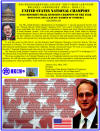 USA Small Business Administration (SBA)
Selected Johnson Choi/HKCHcc
2008 United States
National Champion
USA Small Business Administration (SBA)
Selected Johnson Choi/HKCHcc
2008 United States
National Champion![]()
![]() and follow us
on
and follow us
on
![]()

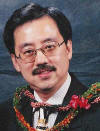
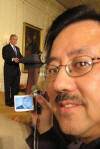
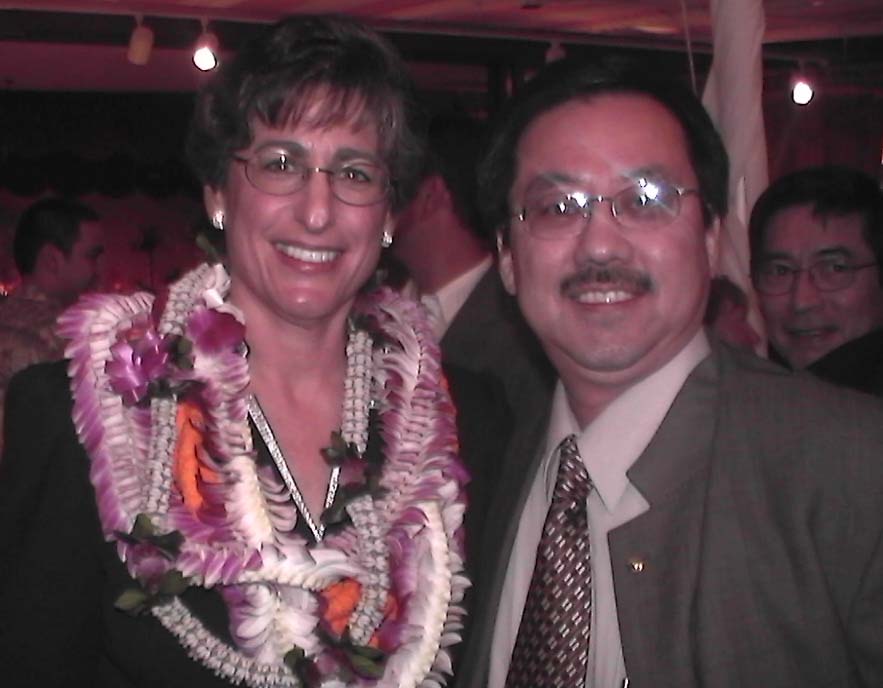

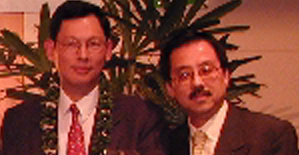
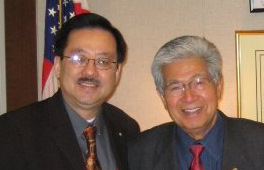


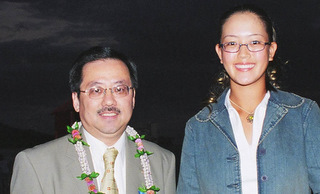
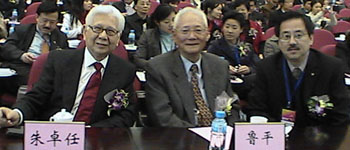












 Traditional Chinese medicine cosmetics have a history of 1,600 years but have only recently started to compete with modern international brands.
Traditional Chinese medicine cosmetics have a history of 1,600 years but have only recently started to compete with modern international brands.  But people like Lu are increasingly turning to traditional Chinese medicine (TCM) cosmetics to sort out their skincare problems, moving away from Western beauty products.
But people like Lu are increasingly turning to traditional Chinese medicine (TCM) cosmetics to sort out their skincare problems, moving away from Western beauty products. Publicity drive: Vice-Minister of
Health and Director-General of the State Administration of Traditional Chinese
Medicine Dr Wang Guoqiang and Secretary for Food & Health Dr York Chow launch
the "Promotion of Traditional Chinese Medicine in China - Hong Kong Program".
Publicity drive: Vice-Minister of
Health and Director-General of the State Administration of Traditional Chinese
Medicine Dr Wang Guoqiang and Secretary for Food & Health Dr York Chow launch
the "Promotion of Traditional Chinese Medicine in China - Hong Kong Program". Healthy pact: Vice-Minister of Health
and Director-General of the State Administration of Traditional Chinese Medicine
Dr Wang Guoqiang (left) and Secretary for Food & Health Dr York Chow sign an
agreement fostering cooperation in the development of Chinese medicine.
Healthy pact: Vice-Minister of Health
and Director-General of the State Administration of Traditional Chinese Medicine
Dr Wang Guoqiang (left) and Secretary for Food & Health Dr York Chow sign an
agreement fostering cooperation in the development of Chinese medicine. The Canadian
Life Sciences Trade Mission has been visiting the annual ICMCM for the past four
years. Photo shows (left to right) Ralph Chow, Director of the TDC, Penelope
Marrett, mission leader, and James Gilmour, Vice Consul and Trade Commissioner
of the Canadian Consulate, at the networking luncheon, organised by the TDC and
the Canadian Consulate today in Hong Kong.
The Canadian
Life Sciences Trade Mission has been visiting the annual ICMCM for the past four
years. Photo shows (left to right) Ralph Chow, Director of the TDC, Penelope
Marrett, mission leader, and James Gilmour, Vice Consul and Trade Commissioner
of the Canadian Consulate, at the networking luncheon, organised by the TDC and
the Canadian Consulate today in Hong Kong. Penelope
Marrett (front, left), President and CEO of the CHFA, and Angela Lau, President
of the HKHFA, sign an MOU promoting information exchange between the two
organisations.
Penelope
Marrett (front, left), President and CEO of the CHFA, and Angela Lau, President
of the HKHFA, sign an MOU promoting information exchange between the two
organisations. Dr
Murray McLaughlin (left), Chairman of AFMnet (left) and Dr Edmund Lee, Executive
Director of the HKJCICM, sign an MOU encouraging R&D development.
Dr
Murray McLaughlin (left), Chairman of AFMnet (left) and Dr Edmund Lee, Executive
Director of the HKJCICM, sign an MOU encouraging R&D development. Albert Wong (left), founding president of the
Modernized Chinese Medicine International Association (MCMIA), and Sidney Ng, an
MCMIA executive, agree that Hong Kong has the potential to become the region's
trade and information hub for quality Chinese medicine. The two took part in the
press briefing today, for the 6th International Conference and Exhibition of the
Modernization of Chinese Medicine and Health Products. The exhibition will take
place August 16-20.
Albert Wong (left), founding president of the
Modernized Chinese Medicine International Association (MCMIA), and Sidney Ng, an
MCMIA executive, agree that Hong Kong has the potential to become the region's
trade and information hub for quality Chinese medicine. The two took part in the
press briefing today, for the 6th International Conference and Exhibition of the
Modernization of Chinese Medicine and Health Products. The exhibition will take
place August 16-20.  Hong Kong Jockey Club - Institute of Chinese Medicine Limited
Hong Kong Jockey Club - Institute of Chinese Medicine Limited
